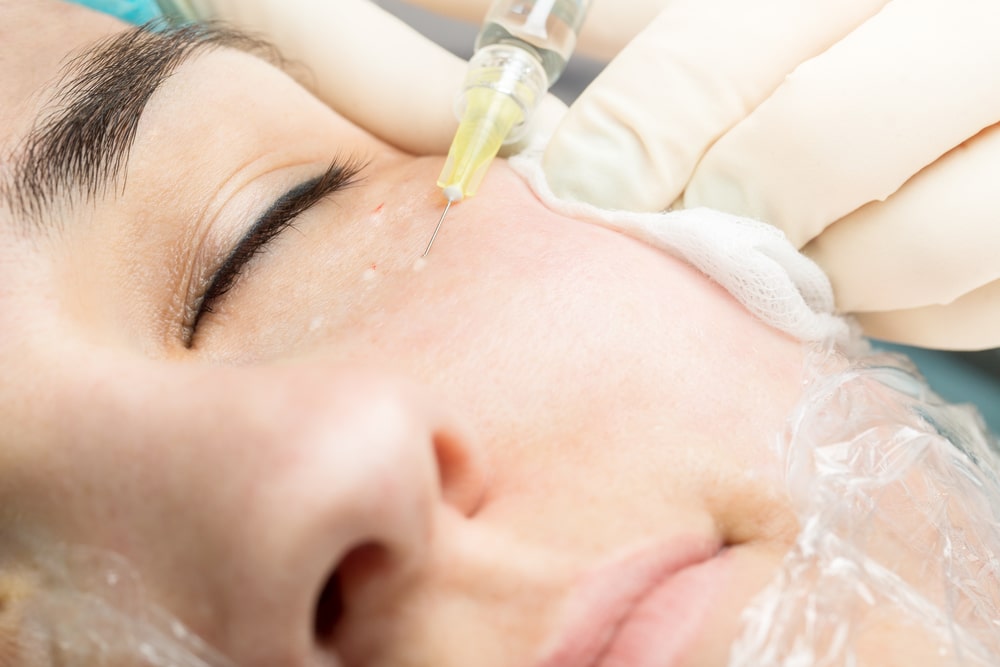
Botox is one of the most common, and effective methods for reversing some of the signs of aging. If a person gets regular botox treatments from an experienced and skilled plastic surgeon, they can even slow the aging process and look younger for longer.
There are more than 7 million Botox treatments carried out each year, with treatments increasing by more than 2% since 2016. As the effects of Botox become more established, more people are turning to this treatment to boost their self-esteem and look refreshed.
Botox is mostly used for cosmetic reasons, but it does have medical uses, as well. People with chronic, severe migraines and individuals with dystonia can benefit from Botox treatments. The most common places that people get botox injections are on the forehead, the chin, the neck, and around the eyes. Many people will get botox for wrinkles that often form between the eyes, and on the sides of the eyes, known as crow’s feet. Some people may even get botox injections for the delicate skin beneath the eyes, though this is rare.
Fine lines, creases, and wrinkles around the eyes can reveal a person’s age. For people who want to look younger for longer, getting botox around the eyes can give them a refreshed appearance and also reverse the clock a few years. A skilled plastic surgeon, when injecting Botox around the eyes, will not drastically change a person’s appearance, or give them a “frozen” or “surprised” look. Effective botox treatments for the eye area will give the person a more youthful expression, and like they’ve been getting a consistent, good night’s sleep each night. Getting botox under the eyes can also reduce dark circles and puffiness.
Botox injections around the eyes work in much the same way as getting botox in other areas of the face. Botox is derived from botulinum toxin, but botox itself is safe and non-toxic. What the material does is paralyze the delicate muscles of the face. This will relax the skin, and prevent creases and wrinkles from forming. Botox around the eyes is highly effective for reducing the appearance of fine lines. However, deeper wrinkles and sagging won’t disappear after a botox injection. They will be less apparent though.
Repeated Botox injections can also shrink the muscle beneath the skin. This can also slow the aging process, and prevent wrinkles and sagging from happening as fast as they usually would. Botox is not only effective for reversing the signs of aging, but it can also slow the aging process, too.
Botox itself is not painful, but the needle can be. Everyone’s pain tolerance is different, and people who have lower pain tolerance thresholds may opt for topical anesthesia before getting an injection. Icing the area can also reduce the sting of the needle.
Botox procedures are conducted in a doctor’s office, and the number of injections will depend on what the patient wants to be treated, and if they have had botox injections before. A person who has never had injections before will need less Botox than a previous candidate. The entire process will take about an hour. During the procedure, a doctor will use a small, narrow needle to inject minuscule amounts of Botox into the skin and underlying muscles. Some people may experience bruising after a procedure, but that should clear up within four days to a week.
After Botox injections, patients should not rub or massage the injected tissues for at least a day after the procedure. Rubbing or otherwise pressing the area can cause the Botox to spread to other parts of the body. This can lead to drooping of the eyes or uneven sagging in the area. In rare cases, serious side effects can result in the botox spreading to places where it was not intended to go, and can lead to toxicity. Patients should rest and avoid strenuous activity after an injection. After 24 hours, patients can resume their usual activities.
After the first several days, patients will not see much of a difference except perhaps some bruising at the injection site. It can take up to a week to two weeks for the Botox to take full effect and paralyze the muscle. Most patients will see the full effects of Botox within ten to fourteen days after the procedure. The area around the eyes should appear smooth and free of creases. Results should last for up to three months, and in some cases, they can last for up to six months. Once the botox wears off, patients will not experience a rebound effect. The muscle and skin above it will go back to looking how it did before the last botox procedure.
People in their late twenties to early thirties can benefit from Botox treatments since the majority of people will notice some creasing and fine lines forming at these ages. Most patients who get botox around the eyes are in their late thirties to mid-forties. Repeated Botox injections can continue to give a person the refreshed, youthful look they want without any severe side effects. Getting botox injections at younger ages can also help prevent severe wrinkles from forming earlier since the substance will paralyze the underlying muscles for months at a time. It is the repeated muscle movements, and subsequent creasing of the skin that lead to wrinkles and fine lines on the face.
For people who wish to get Botox treatments for around the eyes, it is critical that they find an experienced plastic surgeon to perform the procedure so that they get a natural look with minimal bruising. An experienced surgeon will also prevent any unevenness from happening around the eyes when botox is injected into the area. If you want to experience the anti-aging effects of safe and affordable botox today, contact the office of board-certified facial plastic and reconstructive surgeon Doctor Binder today.
